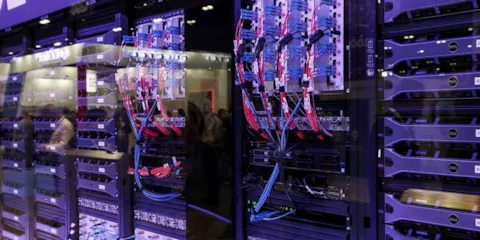Algorithms and artificial intelligence: Norway is in a unique position
By Per Myrseth, responsible for development of methods for quality and risk management of data and algorithms in DNV
Published in Dagens Næringsliv
Questions concerning whether artificial intelligence is safe to use are attracting plenty of attention. Currently, there are few successful examples to point to.
Still, we should be optimistic, because Norway has a good track record in harnessing novel technologies to reap new benefits.
The government presented a national strategy for artificial intelligence in January of this year. The market has developed methods and solutions to ensure the quality of algorithms. This means that the public sector can demand a level of quality during the purchase phase and during use.
The need for trust and quality, both in businesses and by the general poupulation, will contribute to improvements of these methods.
The aspect of artificial intelligence that deals with algorithms, including machine learning, has an enormous potential. It can increase productivity, well-being, transparency, knowledge and competitive advantage. These are gains we must be able to achieve.
When the first paper money was printed, the confidence in the combination of paper and printing technologies was low. This low confidence in the technology was countered by the benefits. Paper notes won the competition with metal coins, and the technology spread. The same thing is happening today in the transition from notes to credit cards, online payment, crypto currencies etc.
Who would drive a car that has not been tested or that does not meet generally accepted standards? As a motorist, I am happy that the automotive industry has developed airbags, seatbelts and ABS brakes, and more recently, increased automation and computerized driving assistants.
Algorithms are about finding valuable patterns in data. You have to create and collect the data with the desired patterns and ensure good data quality. Data quality is at least as important as algorithm quality. And if our goal is to improve trust in the quality of data and algorithms, we need methods to measure quality and manage risk.
Today there are methods, expertise and services for the development, testing and advanced development of algorithms. There are also methods for risk assessments and quality assurance of algorithms, but currently these methods are not often used. This is a societal problem that we must take seriously.
The principles for assessment of quality in physical products can also be used by and large for data and algorithms. Physical equipment becomes degraded over time and it is difficult to increase the quality after production. Algorithms, on the other hand, can steadily improve with new data.
This improvement is the general rule, and risk and quality considerations must take this into account.
In my opinion, the need for a public “Artificial intelligence and algorithm council”, as proposed by Ishita Barua in Dagens Næringsliv on 12 August, is superfluous. The market has already researched and innovated methods for risk management and quality assurance of algorithms. Now we need to put the results of this work into action.
Examples of existing methods for quality and risk management of algorithms include the “Framework for assurance of data-driven algorithms and models”, DNV’s openly published method, and the ISO’s upcoming “Artificial intelligence – Risk management.”
Norwegian industry and our public sector are in a unique position – we have the methods and the expertise, and we have enough data in many fields to develop high quality algorithms that can be trusted.
Working together, we can make improvements that are to the best for the public sector, businesses and citizens.
Now, as a nation, we have the opportunity to advance our digitalization by improving the quality of artificial intelligence and data-driven solutions.
A new public council is probably not the way to achieve this.


